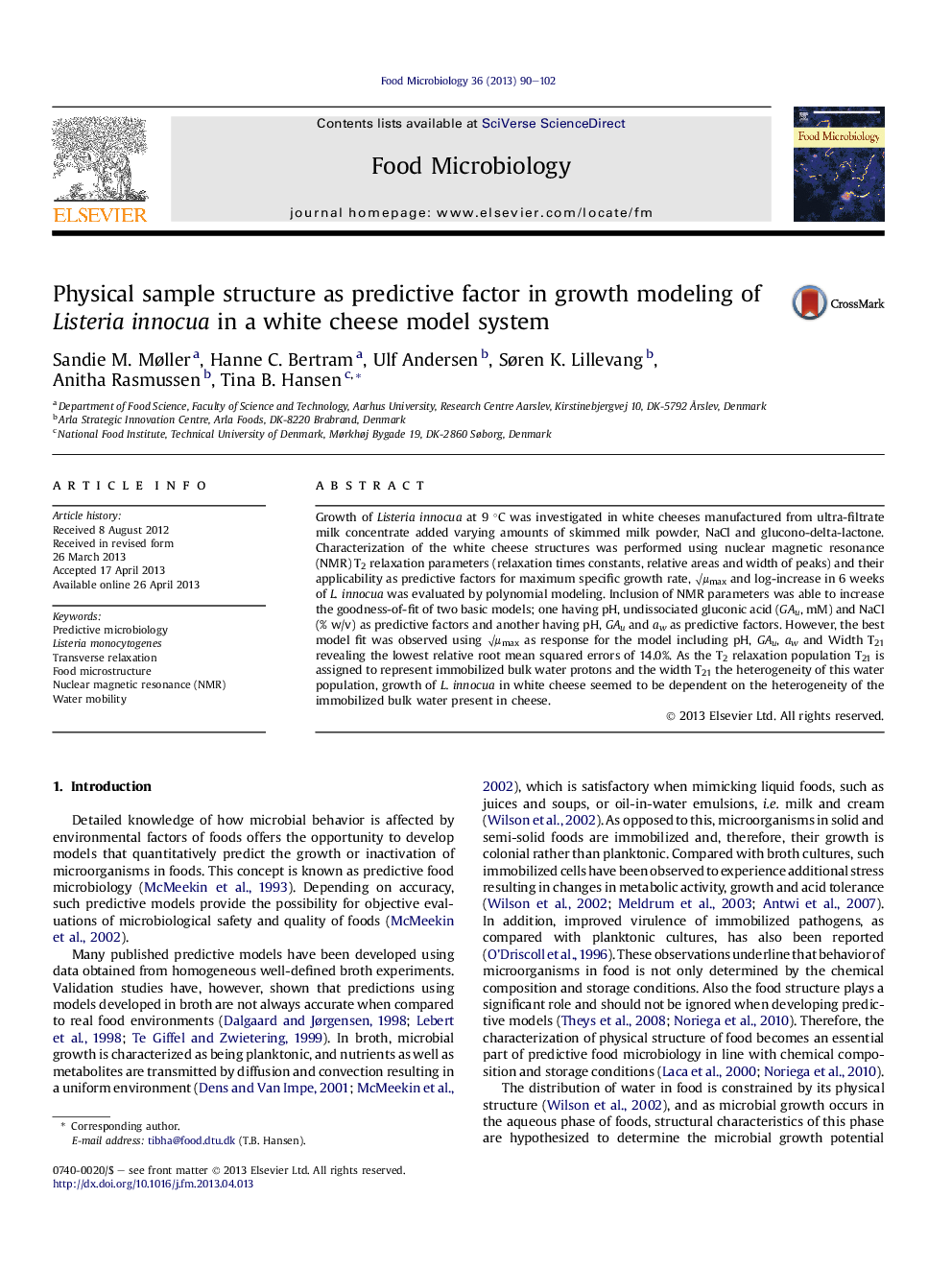| Article ID | Journal | Published Year | Pages | File Type |
|---|---|---|---|---|
| 6288718 | Food Microbiology | 2013 | 13 Pages |
Abstract
Growth of Listeria innocua at 9 °C was investigated in white cheeses manufactured from ultra-filtrate milk concentrate added varying amounts of skimmed milk powder, NaCl and glucono-delta-lactone. Characterization of the white cheese structures was performed using nuclear magnetic resonance (NMR) T2 relaxation parameters (relaxation times constants, relative areas and width of peaks) and their applicability as predictive factors for maximum specific growth rate, âμmax and log-increase in 6 weeks of L. innocua was evaluated by polynomial modeling. Inclusion of NMR parameters was able to increase the goodness-of-fit of two basic models; one having pH, undissociated gluconic acid (GAu, mM) and NaCl (% w/v) as predictive factors and another having pH, GAu and aw as predictive factors. However, the best model fit was observed using âμmax as response for the model including pH, GAu, aw and Width T21 revealing the lowest relative root mean squared errors of 14.0%. As the T2 relaxation population T21 is assigned to represent immobilized bulk water protons and the width T21 the heterogeneity of this water population, growth of L. innocua in white cheese seemed to be dependent on the heterogeneity of the immobilized bulk water present in cheese.
Keywords
Related Topics
Life Sciences
Agricultural and Biological Sciences
Food Science
Authors
Sandie M. Møller, Hanne C. Bertram, Ulf Andersen, Søren K. Lillevang, Anitha Rasmussen, Tina B. Hansen,
